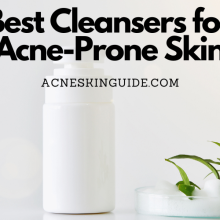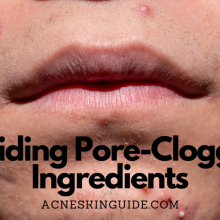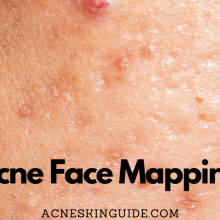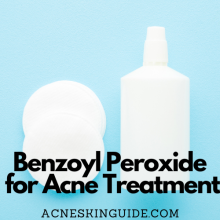Korean Skincare Routine for Acne | Acne Skin Guide
Transitioning to a Korean skincare routine for acne requires a gradual approach. Start by introducing the double cleansing method with an oil-based and water-based cleanser. Slowly phase out your current Western products, replacing them one by one with Korean versions. Begin with hydrating layers like toners, essences, and moisturizers to strengthen your skin barrier before adding active treatments. Patch test new products before full usage. Initially, alternate between your old and new routines every other day for adjustment.
If you have multiple acne concerns, focus on one at a time with targeted products. Introduce active ingredients like BHAs, AHAs, and retinoids slowly at lower concentrations to avoid irritation. Be patient and consistent, as it may take weeks or months for your skin to fully adjust. Monitor your reaction closely and seek professional guidance from a dermatologist if you experience persistent issues like dryness, irritation or worsening breakouts. A mindful transition allows you to successfully adopt the multi-faceted Korean approach.
#1 Recommended Acne Treatment | #2 Recommended Acne Treatment |
 |  |

A Comprehensive Guide to the Korean Skincare Routine for Acne
Struggling with persistent acne can be frustrating, but the Korean skincare approach offers a comprehensive solution for achieving clear, healthy skin. With its emphasis on gentle yet effective layering of targeted treatments, the Korean routine addresses acne from multiple angles while also nourishing and hydrating the skin.
Understanding the Causes of Acne
Understanding the root causes of acne is crucial before embarking on any new skincare regimen. Acne can manifest in various forms, including whiteheads, blackheads, papules, pustules, nodules, and cystic bumps. These blemishes arise due to a combination of factors, such as excess oil production, buildup of dead skin cells, bacterial proliferation, and inflammation. Common triggers include hormonal fluctuations, dietary choices, stress levels, and certain skincare products that may clog pores or irritate the skin.
Step 1: Double Cleansing
The Korean skincare routine for acne typically begins with the double cleansing method, which involves using an oil-based cleanser to dissolve oil-based impurities like makeup, sunscreen, and sebum, followed by a water-based cleanser to remove water-based debris and residue. Gentle massage during cleansing improves circulation and enhances product absorption. It’s essential to double cleanse both in the morning and evening to maintain a clean canvas for subsequent treatments.
Step 2: Toners and Essences
After cleansing, toners play a pivotal role in restoring the skin’s optimal pH balance and preparing it for better absorption of subsequent products. Korean skincare routines often incorporate clarifying toners specifically formulated for acne-prone skin. Essences, lightweight hydrating treatments packed with active ingredients, can also be used to deliver an initial dose of acne-fighting components, priming the skin for more potent treatments.
Step 3: Treatments and Serums
The heart of the Korean acne routine lies in the treatment step, where potent serums and ampoules target acne directly. Look for formulas containing ingredients like beta-hydroxy acids (BHAs), alpha-hydroxy acids (AHAs), and retinoids, which work to unclog pores, exfoliate dead skin cells, and reduce inflammation. To prevent excessive dryness, it’s advisable to alternate between hydrating and exfoliating treatments, ensuring that the skin remains balanced and nourished throughout the process.
Step 4: Sheet Masks
Korean sheet masks infused with acne-calming, soothing ingredients can provide an intensive boost of hydration and nourishment for irritated, acne-prone skin. These masks can be incorporated as a weekly supplemental treatment, offering a concentrated dose of targeted care.
Step 5: Moisturizer
Despite having oily, acne-prone skin, a non-comedogenic moisturizer is essential for balancing oil production and maintaining a healthy skin barrier. Look for lightweight gel or cream formulas labeled as non-pore clogging, as they will hydrate the skin without exacerbating breakouts.
Step 6: Sunscreen
Sun protection is a crucial step in any acne skincare routine, as UV exposure can worsen inflammation and lead to discoloration and scarring from acne marks. Oil-free, non-comedogenic sunscreens should be applied daily and reapplied frequently when spending extended time outdoors.
Supplemental Acne Treatments
In addition to the core routine, Korean skincare offers supplemental treatments to address specific acne concerns. Specialized tools like rubber masks can help deeply unclog congested pores, while addressing hormonal triggers or following a low-glycemic diet may improve hormonal acne. Products containing centella, green tea, and snail mucin can help calm and heal inflamed acne lesions, reducing redness and promoting faster healing.
Implementing the Routine
When it comes to implementing the Korean acne routine, a basic daily regimen should include double cleansing, toner, treatment, moisturizer, and sunscreen. For those seeking more intensive treatment, stronger exfoliating treatments and sheet masks can be cycled in, but it’s crucial to adjust the routine based on individual skin type and introduce new products slowly to avoid overwhelming the skin.
Potential Downsides and Precautions
It’s important to note that while the Korean skincare routine offers a comprehensive approach to acne management, it may not be a one-size-fits-all solution. Some individuals may experience purging or initial worsening of acne as their skin adjusts to new products. Over-exfoliating can also lead to dehydration and irritation, so it’s essential to simplify the routine if such issues arise. For severe, cystic acne or persistent breakouts, seeking guidance from a dermatologist is recommended.
Closing Thoughts
While the Korean skincare routine for acne may seem extensive, its layered approach and use of targeted, gentle products make it an effective choice for those struggling with acne. With patience, consistency, and the right product selection tailored to individual skin concerns, the Korean routine can help achieve clear, radiant, and healthy skin over time. However, it’s essential to be mindful of potential purging or over-exfoliation and to seek professional help if needed for severe or persistent acne.
#1 Recommended Acne Treatment | #2 Recommended Acne Treatment |
 |  |
Summary and FAQs
How do I choose the right Korean skincare products for my acne type?
When choosing Korean skincare products for your specific acne type, it’s important to consider the key ingredients and formulations that target your individual concerns. Here are some general guidelines:
- For hormonal acne:
Look for products containing ingredients like tea tree oil, salicylic acid, niacinamide, and retinoids. These help regulate oil production, unclog pores, and reduce inflammation associated with hormonal acne. - For cystic acne:
Opt for products with higher concentrations of salicylic acid (0.5-2%), benzoyl peroxide, or sulfur. These potent acne-fighting ingredients can help dry out and reduce the severity of cystic lesions. - For whiteheads and blackheads:
Products with alpha-hydroxy acids (AHAs) like glycolic acid or lactic acid are effective for chemical exfoliation and keeping pores clear. - For acne-prone, sensitive skin:
Look for gentle, non-irritating formulas with soothing ingredients like centella asiatica, green tea, or snail mucin. Avoid products with high concentrations of active ingredients or harsh exfoliants.
Additionally, it’s recommended to patch test new products, introduce them slowly into your routine, and adjust based on your skin’s reaction. Consulting with a dermatologist or skincare professional can also help you choose the best products for your specific acne type and concerns.
Can the Korean skincare routine be used during an active acne breakout or flare-up?
Yes, the Korean skincare routine can be used during an active acne breakout or flare-up, but it may require some adjustments and precautions:
- Simplify the routine: During a severe breakout, it’s best to scale back your routine to the essentials: a gentle, non-drying cleanser, a soothing toner, a spot treatment, and a non-comedogenic moisturizer. Avoid using too many active ingredients or exfoliants, as they can further irritate inflamed skin.
- Focus on calming ingredients: Look for Korean products with soothing, anti-inflammatory ingredients like centella asiatica, green tea, aloe vera, or snail secretion filtrate. These can help reduce redness and calm angry breakouts.
- Use targeted spot treatments: Instead of applying harsh acne treatments all over your face, use them as targeted spot treatments on individual blemishes. This prevents over-drying and irritation of the surrounding skin.
- Increase hydration: Acne treatments can be drying, so it’s crucial to counterbalance with hydrating layers like essences, ampoules, or soothing sheet masks. This will prevent excessive dryness, which can lead to more breakouts.
- Avoid physical exfoliation: During a breakout, avoid scrubs, brushes, or rough physical exfoliation, as they can spread bacteria and worsen inflammation.
- Be gentle: Use soft, clean cloths or hands to apply products, and avoid aggressive rubbing or picking at blemishes.
If your breakout persists or worsens despite adjusting your routine, it’s advisable to consult a dermatologist for professional treatment recommendations.
How do I incorporate Korean skincare tools like jade rollers or gua sha into my acne routine?
Korean skincare tools like jade rollers and gua sha can be incorporated into an acne-focused routine, but it’s essential to use them properly to avoid exacerbating breakouts. Here are some tips:
Jade Rollers:
- Use a jade roller after applying your essence or serum step. The gentle rolling motion can help increase product absorption and improve circulation.
- Opt for a smaller roller for targeted use on the areas prone to acne, such as the chin, jawline, or forehead.
- Ensure your jade roller is thoroughly cleaned and disinfected before each use to prevent spreading bacteria.
- Avoid rolling over active, inflamed pimples, as this can further irritate the skin and potentially spread the infection.
Gua Sha:
- Use a gua sha tool after applying your moisturizer or oil-based treatment. The gentle scraping motion can help dislodge blackheads and encourage lymphatic drainage.
- Opt for a smaller, precision gua sha tool for targeted use on acne-prone areas.
- Always use a gentle, upward motion, avoiding excessive pressure or scraping over active breakouts.
- Cleanse and disinfect your gua sha tool before each use.
General Tips:
- Don’t incorporate new tools during an active breakout or flare-up, as the added manipulation can worsen inflammation.
- Use tools in upward motions to encourage lymphatic drainage and prevent spreading bacteria.
- Start with short sessions (2-3 minutes) and gradually increase as your skin tolerates the tools.
- Opt for tools made of smooth, non-porous materials like jade or rose quartz, which are less likely to harbor bacteria.
If you notice increased irritation, redness, or breakouts after using skincare tools, discontinue use and consult a dermatologist for personalized advice.
Are there any specific dietary recommendations or supplements that complement the Korean acne routine?
Yes, there are several dietary recommendations and supplements that can complement and enhance the effects of a Korean acne skincare routine:
Dietary Recommendations:
- Follow a low-glycemic diet: Consuming foods with a low glycemic index can help regulate blood sugar levels and potentially reduce hormonal fluctuations that contribute to acne.
- Increase intake of antioxidant-rich foods: Foods high in antioxidants, such as berries, leafy greens, and tomatoes, can help reduce inflammation and oxidative stress, which can worsen acne.
- Limit dairy and high-fat foods: Some studies suggest that dairy products and foods high in saturated fats may exacerbate acne for some individuals.
- Stay hydrated: Drinking plenty of water can help flush out toxins and keep the skin well-hydrated, promoting a healthier complexion.
Supplements:
- Zinc: Zinc is an essential mineral that can help regulate oil production and reduce inflammation associated with acne.
- Omega-3 fatty acids: Supplements like fish oil or flaxseed oil can provide anti-inflammatory benefits, which may help improve acne.
- Probiotics: Probiotic supplements may help balance gut bacteria, which can positively impact skin health and reduce acne.
- Spearmint tea or supplements: Spearmint has been shown to potentially reduce hormonal acne by lowering levels of testosterone in some individuals.
- Korean herbal supplements: Traditional Korean herbal supplements like Gamryeonhye-go, which contains herbs like licorice and sophora root, may help regulate sebum production and improve acne.
It’s important to note that individual responses to dietary changes and supplements can vary, and it’s always best to consult with a healthcare professional before making significant changes or starting new supplements, especially if you have any underlying health conditions or are taking medications.
How do I transition my skincare routine from a Western approach to a Korean one for acne?
Transitioning from a Western skincare routine to a Korean one for acne requires a gradual and mindful approach to avoid overwhelming or irritating your skin. Here are some tips to help you make the switch smoothly:
- Start by introducing the Korean double-cleansing method:
Replace your current cleanser with a gentle oil-based cleanser followed by a water-based cleanser. This will help prepare your skin for the multi-step routine. - Slowly phase out your current Western products:
As you finish up your existing products, start incorporating Korean replacements one by one. Don’t discontinue everything at once, as this can shock your skin. - Begin with the hydrating and nourishing steps:
Introduce Korean toners, essences, and moisturizers first. This will help strengthen your skin barrier and increase its tolerance for the active treatments. - Patch test new products:
Before fully incorporating a new Korean product, patch test it on a small area of your skin for a few days to check for any adverse reactions. - Alternate between your old and new routines:
In the beginning, you can alternate between your Western routine and the Korean routine every other day to allow your skin to adjust gradually. - Focus on one concern at a time:
If you have multiple acne concerns (e.g., whiteheads, cystic acne, hyperpigmentation), focus on addressing one concern at a time with targeted Korean products. - Introduce active treatments slowly:
When adding Korean acne treatments like BHAs, AHAs, or retinoids, start with lower concentrations and shorter contact times to avoid over-exfoliation or irritation. - Be patient and consistent:
It may take several weeks or even months for your skin to fully adjust to the new routine. Stick with it consistently, and monitor your skin’s reaction. - Seek professional advice if needed:
If you experience persistent issues, such as excessive dryness, irritation, or worsening acne, don’t hesitate to consult a dermatologist or skincare professional for guidance.
Remember, the transition process requires patience and careful observation of your skin’s response. By taking it slow and making gradual adjustments, you can successfully incorporate the beneficial aspects of the Korean skincare approach into your acne-fighting routine.






